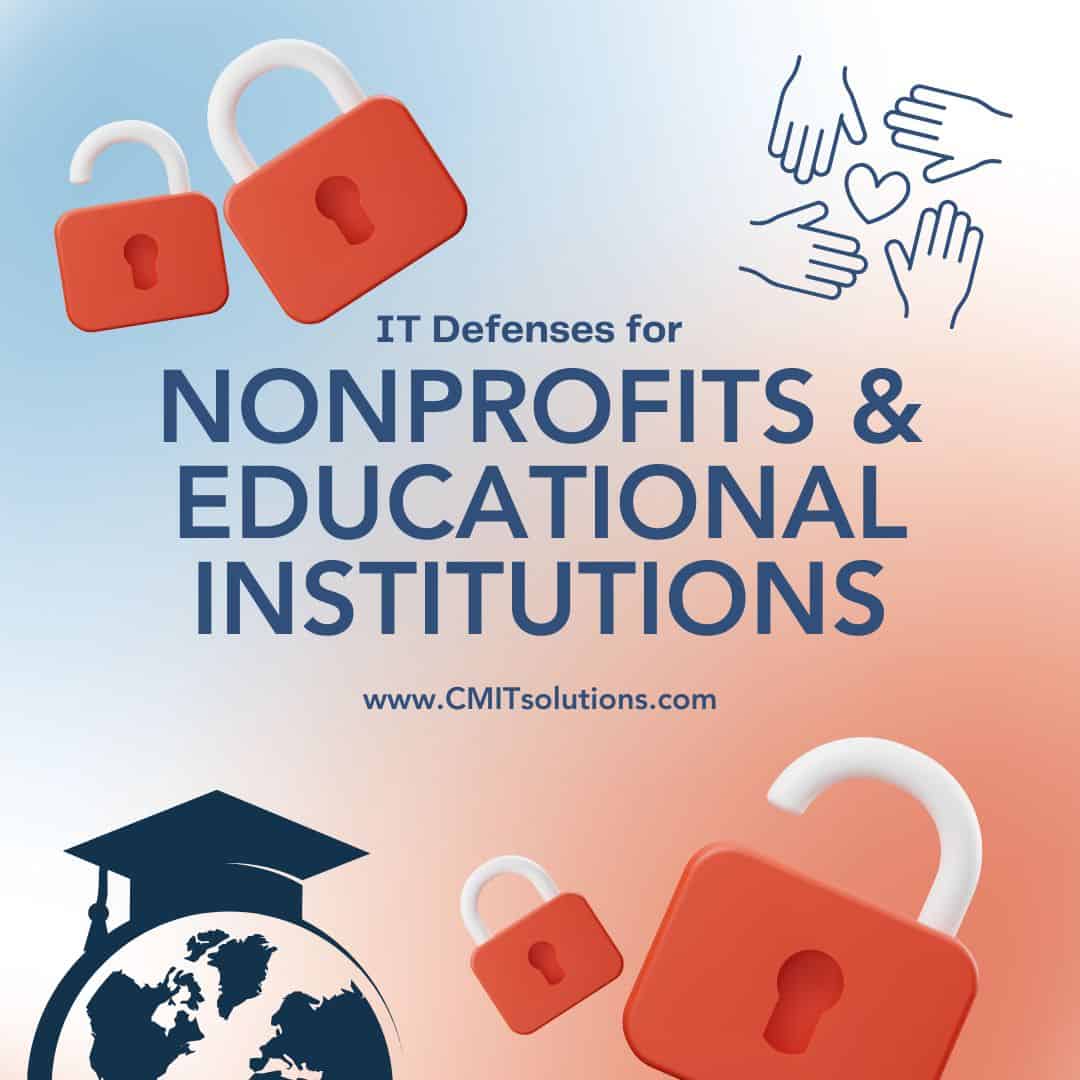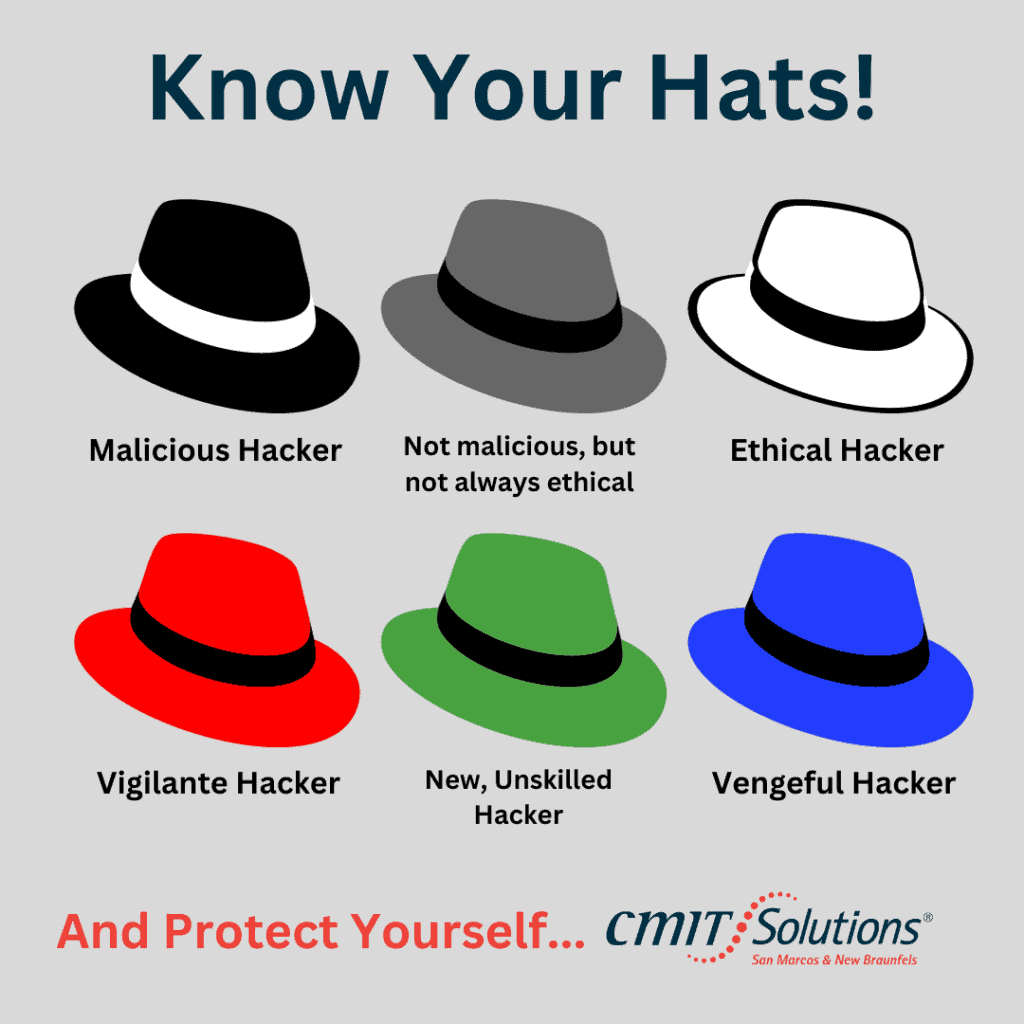Essential Cybersecurity Strategies to Protect Nonprofits and Schools in 2025
Did you know that over 60% of nonprofits have experienced a cybersecurity breach, yet only a fraction have proactive defense strategies in place? As educational institutions and nonprofits increasingly rely on technology to operate and serve their communities, cybersecurity threats have never been more urgent. To prevent data breaches, ransomware attacks, and compliance failures, these organizations must prioritize IT security now. Let’s explore the biggest challenges they face and the best strategies to fortify their digital infrastructure.
- Data Breaches: Safeguarding Sensitive Information
Educational institutions and nonprofits handle vast amounts of sensitive data, including personal records, financial information, and student data. A breach can result in identity theft, legal liability, and reputational harm.
How to Mitigate the Risk:
- Implement robust encryption to protect stored and transmitted data.
- Enforce strict access controls to limit data exposure.
- Use continuous network monitoring to detect and neutralize threats before escalation.
Beyond data breaches, another pressing cybersecurity concern is the lack of proper training among staff members.
- Addressing Insufficient Cybersecurity Training
Many employees are unaware of the tactics hackers use, making them vulnerable to phishing attacks and social engineering.
Solutions:
- Conduct regular cybersecurity awareness training for all staff.
- Simulate phishing attack drills to test readiness.
- Establish clear protocols for reporting suspicious activity.
By improving cybersecurity training, organizations can reduce human error, one of the leading causes of security breaches.
- Protecting Donor & Student Data
Trust is the foundation of donor and student relationships, making data security a priority.
Key Safeguards:
- Use multi-factor authentication (MFA) to prevent unauthorized access.
- Perform regular audits to ensure compliance with security standards.
- Store data in highly secure environments with limited user permissions.
- Combating Ransomware Attacks
Ransomware attacks can encrypt critical data, disrupt operations, and demand high ransom payments. Nonprofits are particularly vulnerable due to limited IT budgets.
Best Practices to Prevent Ransomware:
- Deploy endpoint security solutions that detect and block ransomware.
- Maintain frequent backups in secure, offline locations.
- Train staff on ransomware-specific security measures.
A cybersecurity expert, John Doe, explains: “Nonprofits often underestimate their risk level, but hackers target them due to weaker defenses. A single ransomware attack can shut down operations for weeks.”
- Strengthening Incident Response Plans
When a cyberattack occurs, having a well-defined incident response strategy is essential to minimize damage.
What Organizations Should Do:
- Develop and document cyber incident response protocols.
- Conduct regular security drills to test preparedness.
- Partner with IT security professionals to ensure expert-level defense.
- Navigating Complex Compliance Standards
Compliance regulations such as FERPA, HIPAA, and PCI DSS require organizations to implement strict security measures.
How to Stay Compliant:
- Work with IT experts familiar with regulatory requirements.
- Conduct routine security assessments to identify vulnerabilities.
- Ensure all systems meet industry security standards.
- Balancing Fundraising & Cybersecurity
Online fundraising platforms present security vulnerabilities, making them a target for fraud and data theft.
Ways to Protect Donor Transactions:
- Use secure payment gateways with end-to-end encryption.
- Regularly monitor and audit online donation systems.
- Ensure compliance with Payment Card Industry (PCI) security standards.
A recent case study from a nonprofit in Texas revealed how a lack of security led to $50,000 in fraudulent transactions within days. Strengthening online donation platforms is critical to prevent such incidents.
- Overcoming Staffing Limitations
Hiring skilled IT professionals is challenging for schools and nonprofits due to budget constraints.
Cost-Effective Solutions:
- Outsource IT services to a trusted provider for expert security support.
- Utilize automated security solutions to monitor and mitigate threats.
- Invest in cybersecurity training to upskill existing staff.
Partnering with Trusted IT Experts
Educational institutions and nonprofits can enhance cybersecurity defenses by working with experienced IT professionals. A managed IT service provider, like CMIT Solutions, offers proactive monitoring, cybersecurity training, compliance guidance, and incident response planning. This partnership ensures organizations can focus on their mission while maintaining a secure digital infrastructure.
By proactively addressing these cybersecurity challenges, schools and nonprofits can safeguard their stakeholders, build trust, and continue making a positive impact in their communities.
Next Steps: Get Expert IT Security Support Today
To ensure your organization is fully protected, consider scheduling a free cybersecurity audit with CMIT Solutions. Don’t wait until a breach happens—strengthen your IT defenses today.
FAQ: Strengthening IT Security for Nonprofits & Schools
What are the top 3 cybersecurity trends?
The top three cybersecurity trends affecting nonprofits and educational institutions in 2025 are:
- Increased Ransomware Attacks – Cybercriminals are increasingly targeting nonprofits and schools with ransomware, encrypting critical data and demanding payment to restore access. Preventative measures include endpoint security, frequent data backups, and employee training.
- Stricter Compliance Regulations – Organizations must meet FERPA, HIPAA, and PCI DSS standards to protect sensitive data. Partnering with IT security professionals ensures compliance and prevents costly violations.
- Adoption of Multi-Factor Authentication (MFA) – MFA is becoming a standard security requirement, preventing unauthorized access to donor, student, and financial records.
What are the 5 best methods used for cybersecurity?
The five most effective cybersecurity strategies for nonprofits and educational institutions include:
- Data Encryption & Access Controls – Encrypting sensitive information and restricting access to essential personnel minimizes breach risks.
- Cybersecurity Awareness Training – Educating staff on phishing, social engineering, and ransomware threats helps prevent human errors that lead to breaches.
- Regular Security Audits & Compliance Checks – Conducting routine assessments ensures networks, payment systems, and databases meet industry security standards.
- Ransomware Prevention & Incident Response Plans – Organizations must have proactive ransomware defenses and clearly defined cyber incident response protocols to limit downtime and financial damage.
- Outsourced IT Security Services – Due to budget constraints, many nonprofits and schools partner with IT experts to receive 24/7 security monitoring, compliance support, and rapid response solutions.
Do nonprofits need cybersecurity?
Absolutely. Nonprofits handle sensitive donor, financial, and operational data, making them a prime target for cyberattacks. Without strong cybersecurity measures, organizations risk:
- Financial losses due to fraud or ransomware payments.
- Legal penalties for failing to protect confidential data.
- Reputation damage that can deter donors and supporters.
To protect themselves, nonprofits should implement multi-factor authentication (MFA), monitor donation systems for fraud, and partner with cybersecurity experts.
What are the 5 C’s of cybersecurity?
The 5 C’s of cybersecurity represent core principles that ensure strong IT security for nonprofits and schools:
- Change – Regularly updating security policies and IT defenses to adapt to evolving cyber threats.
- Compliance – Ensuring adherence to FERPA, HIPAA, and PCI DSS security standards to protect sensitive data.
- Coverage – Implementing full-scale cybersecurity solutions, including data encryption, access controls, and threat monitoring.
- Continuity – Developing a cyber incident response plan and maintaining frequent data backups to ensure rapid recovery from breaches.
- Collaboration – Working with IT security experts to provide ongoing cybersecurity support and prevent future attacks.




